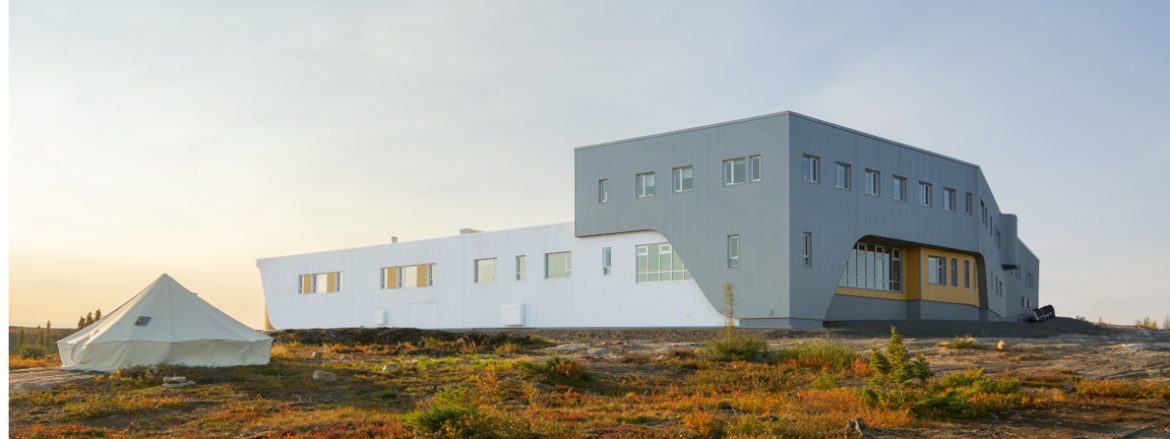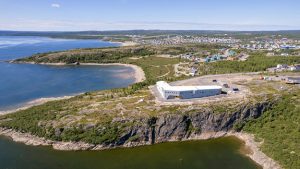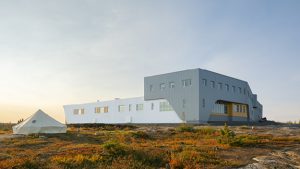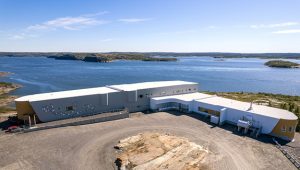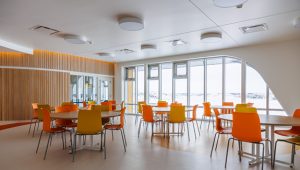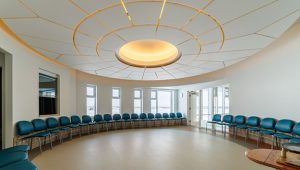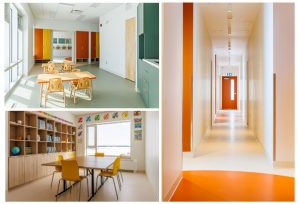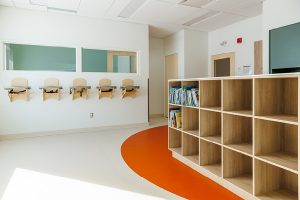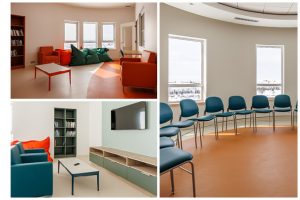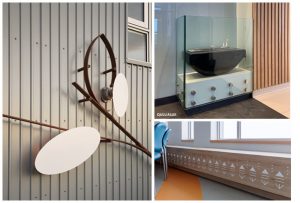-
LOCATION
Kuujjuaq, Nunavik
-
TYPE
Inuit and First Nations
Cultural -
CLIENT
Isuarsivik
-
BUDGET
$40.5 M
-
YEAR
Inaugurated in September 2023
CONTEXT
Since 1994 the Isuarsivik Regional Recovery Centre offers specialized services to residents of the 14 communities of Nunavik dealing with substance use and trauma. It was created by the Inuit, for the Inuit. The Centre delivers an inpatient program that responds to a regional problem by supporting people facing alcohol and drug addiction.
The new Regional Centre triples the capacity of the previous centre while providing a new healing program for families as well specialized support for pregnant women. This important project is proof of the level of commitment offered by regional organizations and the various governments to support Nunavimmiut in their pursuit for healing. Its official opening took place at the end of September 2023.
DESIGN OF A NEW CENTRE
The new recovery centre stands on a rocky peninsula in Kuujjuaq overlooking the Koksoak River in Kuujjuaq. The contact with nature is at the heart of the healing journey. The built environment works alongside nature to create a cultural surround that supports the treatment developed by Isuarsivik. The Centre fully embraces the landscape with its two long urpik branches-arctic willows, medicinal plant, symbol of the Centre.
The reception is located at the intersection of the two wings, a true area of human confluence. The two wings of the building connect around a qaggiq, circular space (inspired by the Inuit communal igloo, ancestral place for meeting and sharing, true beating heart of the Centre. Are found on that level and on the floor above, public spaces, therapy services and offices. Two small qagguit, more intimate are located at both ends of the accommodation wings, living quarters serving the clients, “guests”.
The fall colours of the Nunavik landscape pervade the interiors, bathing them in rich tones of oranges, greens and ochres. The exterior draws its inspiration from the urpik. The muted exterior cladding emphasizes the ends of the wings; the warm colour of the wood clad qagguit evokes the soft glow of the arctic willow catkins or buds.
ARTWORKS INTEGRATION
Several artworks were integrated into the project allowing local artists to express the culture of the community:
- The urpik has been reinterpreted by the artist Alec Gordon on the main facade. The catkins or buds are backlit, recalling their soft glow. The work is best seen during the long winter nights.
- Tunniit (Inuit female facial tattoo) created by Sarah May were integrated in various places such as glass partitions and cabinework.
- The qullialuk (large qulliq, a traditional Inuit oil lamp) welcomes guests at the main entrance of the Centre. This sculpture is the result of the collaboration of artists Mattiusi Iyaituk, Benjamin Isaac, George Kaukai, Charleen Watt, Sarah May & Pascale Archambault.
Photo Gallery
KEY PERSONNEL
Alain Fournier
Éric Moutquin
CONTACT
Alain Fournier
Partner-in-charge
fournier@evoqarchitecture.com

